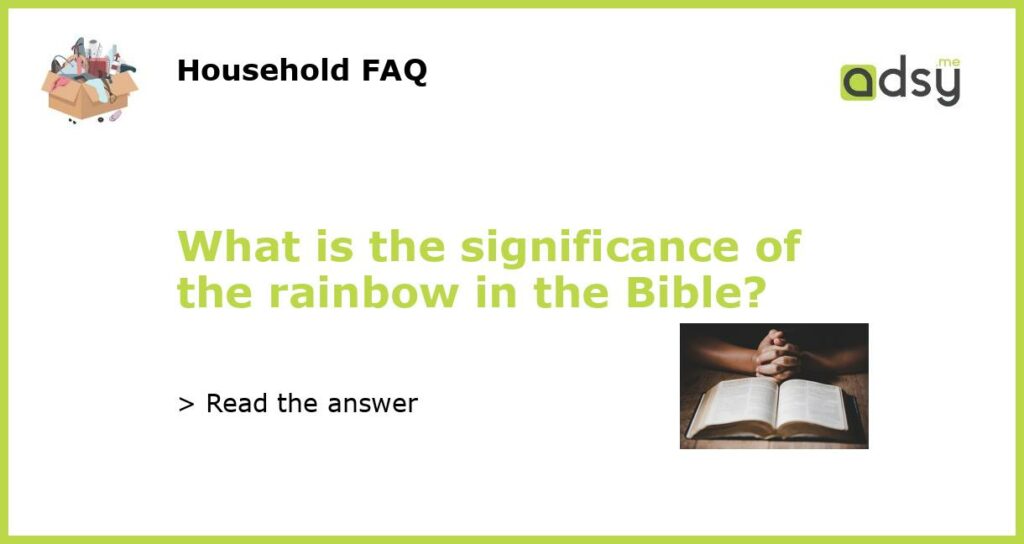The Rainbow as a Symbol of God’s Promise
The rainbow is a fascinating natural phenomenon, captivating the human imagination since time immemorial. But for Christians, the rainbow is not just a kaleidoscope of colors, but a symbolic reminder of God’s promise to humanity. The first rainbow appeared in the Bible after the great flood, which utterly destroyed the earth except for Noah and his family, who were saved in the ark. Genesis 9: 12-16 says that God set the rainbow in the clouds as a sign of His everlasting covenant with humankind never to destroy the earth by flood. Therefore, the rainbow represents God’s faithfulness to His promises, His mercy to His creation, and His unchanging nature even in the midst of human sin and rebellion.
The Rainbow as a Sign of Salvation
In addition to being a symbol of God’s promise, the rainbow can also represent salvation in the Bible. In the New Testament, Jesus refers to the days of Noah and the flood, saying that just as in those days, people were eating and drinking, marrying and giving in marriage until the flood came and took them all away, so the Son of Man will come at an unexpected hour (Matthew 24:37-39). This passage implies that just as the flood was a judgment upon wickedness, so the Second Coming of Christ will also be a time of reckoning for humanity. However, those who put their faith in Christ will be saved, just as Noah was saved from the flood through the ark. Therefore, the rainbow can be a symbol of the hope and assurance that the followers of Christ have of their salvation in Him.
The Significance of the Rainbow in Christian Art and Literature
The rainbow has been a popular theme in Christian art and literature throughout the centuries. It has been depicted in various forms, from a simple arch of colors to a more intricate composition of biblical scenes, angels, and the Holy Trinity. In medieval art, the rainbow was often shown as a circle, symbolizing eternity and the divine perfection of God’s promise. In literature, the rainbow has been used to express a range of emotions, from joy and triumph to sorrow and lamentation. For instance, in John Keats’ poem “Isabella,” the rainbow signifies the fleeting nature of earthly beauty and happiness, which can be shattered by death and separation.
The Rainbow in Christian Culture and Traditions
The rainbow has also found its way into various Christian traditions, rituals, and celebrations. In some cultures, it is customary to hang a rainbow cloth or banner in the church during the Lenten season, as a symbol of hope and renewal in preparation for Easter. In other traditions, the rainbow is associated with the sacraments, such as baptism and confirmation, which mark the beginning of a new life in Christ. The rainbow is also linked to the concept of God’s providence or care, which is believed to guide and sustain believers in their daily lives. Thus, the rainbow represents not only a spiritual truth or symbol, but a living reality and experience of God’s grace and presence in the world.
The Rainbow as a Call to Faith and Obedience
Finally, the rainbow can also be seen as a call to faith and obedience to God. Just as God promised never to destroy the earth by flood again, He also promises to forgive and redeem all those who repent and turn to Him in faith. However, this promise is not a license to sin, but an invitation to follow Christ and live for Him. Therefore, the rainbow can remind us of the seriousness of sin, the necessity of repentance, and the urgency of sharing the gospel with others. It can also encourage us to live a life of holiness and service, with the hope of seeing Jesus face to face, who is the ultimate fulfillment of God’s promise of salvation.






